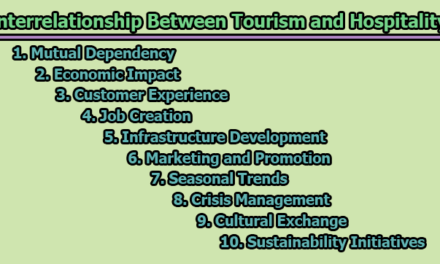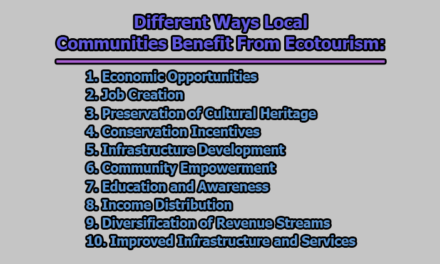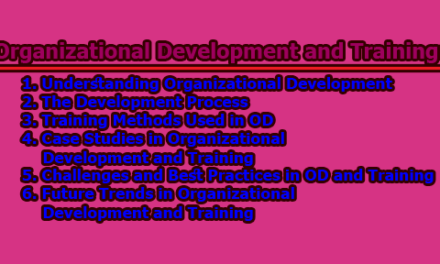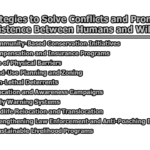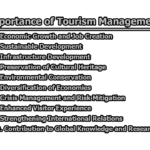Examples Along with the Lessons learned of Successful Cultural Heritage Preservation Projects:
Several successful cultural heritage preservation projects serve as inspiring examples of effective strategies and approaches in safeguarding and promoting cultural heritage. Here are some of the examples along with the lessons learned of successful cultural heritage preservation projects:
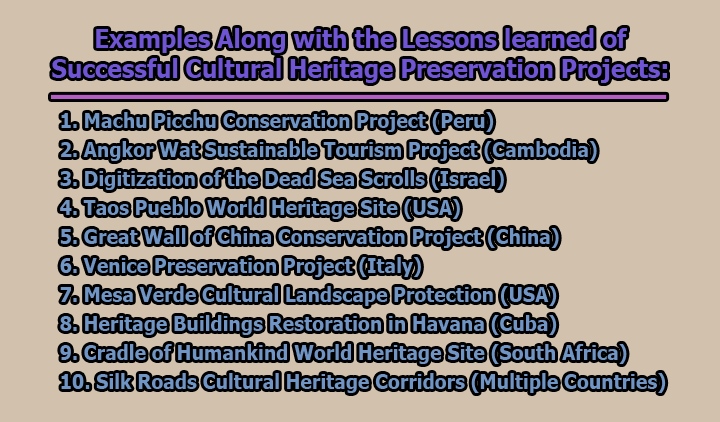
1. Machu Picchu Conservation Project (Peru):
Lesson Learned: Comprehensive conservation planning is essential for safeguarding fragile cultural sites.
Example: The Machu Picchu Conservation Project stands as a prime example of successful cultural heritage preservation efforts. Machu Picchu, a UNESCO World Heritage Site located in Peru, is an iconic Inca citadel renowned for its architectural marvels and historical significance. Recognizing the need to protect this fragile cultural treasure from the impacts of tourism, environmental degradation, and natural disasters, the Peruvian government, in collaboration with international organizations, launched the Machu Picchu Conservation Project.
The project employs a multidisciplinary approach to conservation, encompassing archaeological research, structural stabilization, vegetation management, and visitor management strategies. Archaeologists conduct ongoing research to understand the site’s history, construction techniques, and cultural significance, informing conservation decisions. Structural engineers implement measures to stabilize and reinforce vulnerable structures, such as retaining walls, terraces, and temples, to mitigate the risk of collapse or erosion.
Vegetation management efforts focus on controlling invasive species, preventing soil erosion, and restoring native plant communities to preserve the site’s ecological integrity. Visitor management strategies aim to balance tourism demand with conservation priorities by implementing visitor quotas, trail maintenance programs, and interpretation initiatives to educate visitors about the site’s significance and conservation needs.
The Machu Picchu Conservation Project highlights the importance of comprehensive conservation planning in safeguarding fragile cultural sites. By integrating archaeological research, structural engineering, ecological restoration, and visitor management strategies, the project ensures the long-term preservation of Machu Picchu while promoting sustainable tourism and community engagement.
2. Angkor Wat Sustainable Tourism Project (Cambodia):
Lesson Learned: Sustainable tourism development can contribute to both cultural preservation and community well-being.
Example: The Angkor Wat Sustainable Tourism Project in Cambodia exemplifies how sustainable tourism practices can support cultural heritage preservation and enhance community livelihoods. Angkor Archaeological Park, a UNESCO World Heritage Site, is home to the iconic Angkor Wat temple complex and other ancient Khmer ruins. The site attracts millions of visitors each year, generating significant revenue but also posing challenges related to conservation, infrastructure, and community development.
The project, implemented by UNESCO and the Cambodian government, focuses on mitigating the negative impacts of tourism while maximizing its socio-economic benefits for local communities. Sustainable tourism initiatives include the development of visitor management plans, the promotion of responsible tourism practices, and the support of community-based tourism initiatives.
Visitor management plans aim to regulate tourist flow, minimize environmental degradation, and protect fragile monuments from damage. Infrastructure improvements, such as the construction of visitor centers, interpretation trails, and waste management facilities, enhance visitor experiences while minimizing the impact on cultural heritage sites.
Community-based tourism initiatives empower local communities to participate in tourism activities and benefit from tourism revenues. By providing training, capacity-building, and financial support to local entrepreneurs, the project creates opportunities for community members to offer authentic cultural experiences, homestays, handicraft workshops, and guided tours.
The Angkor Wat Sustainable Tourism Project demonstrates the potential of sustainable tourism development to contribute to both cultural preservation and community well-being. By integrating conservation efforts, responsible tourism practices, and community engagement initiatives, the project promotes the sustainable management of Angkor Archaeological Park while supporting local livelihoods and fostering socio-economic development in surrounding communities.
3. Digitization of the Dead Sea Scrolls (Israel):
Lesson Learned: Digital technologies can significantly enhance access to and preservation of cultural heritage artifacts.
Example: The digitization project of the Dead Sea Scrolls, undertaken by the Israel Antiquities Authority in collaboration with Google, represents a groundbreaking initiative in the preservation and accessibility of ancient manuscripts. The Dead Sea Scrolls, discovered in the Qumran caves near the Dead Sea in the mid-20th century, comprise a collection of religious texts and biblical manuscripts dating back over 2,000 years. Due to their fragile nature and historical significance, preserving and making these scrolls accessible to scholars and the public posed significant challenges.
The digitization project involved photographing and digitizing thousands of fragments of the Dead Sea Scrolls using high-resolution imaging techniques. These digital images were then compiled into an online database accessible to researchers, educators, and the general public worldwide. By making the scrolls available in digital format, the project facilitates remote access to these invaluable artifacts, overcoming barriers related to physical access, conservation concerns, and preservation of fragile materials.
The digitization of the Dead Sea Scrolls demonstrates the transformative power of digital technologies in cultural heritage preservation. By digitizing cultural artifacts, museums, libraries, and cultural institutions can enhance accessibility, facilitate scholarly research, and promote public engagement with cultural heritage resources.
4. Taos Pueblo World Heritage Site (USA):
Lesson Learned: Indigenous knowledge and community involvement are vital for the preservation of cultural landscapes.
Example: Taos Pueblo, a UNESCO World Heritage Site located in New Mexico, exemplifies successful cultural landscape preservation through traditional knowledge and community stewardship. Taos Pueblo is one of the oldest continuously inhabited communities in North America, with its multi-story adobe dwellings dating back over a thousand years. The Pueblo people have maintained their ancestral land, cultural traditions, and sustainable land management practices for generations.
Preservation efforts at Taos Pueblo emphasize the importance of indigenous knowledge and community involvement in heritage conservation. The Pueblo people continue to practice traditional building techniques, using locally sourced materials and ancient construction methods to maintain and repair their adobe structures. Additionally, the community actively participates in land stewardship, implementing conservation measures to protect natural resources, wildlife habitats, and sacred sites within the Pueblo lands.
Lessons from Taos Pueblo highlight the significance of respecting indigenous sovereignty, engaging local communities in heritage management, and integrating traditional ecological knowledge into conservation strategies. By empowering indigenous communities to preserve and manage their cultural landscapes, heritage stakeholders can foster sustainable development, strengthen cultural identity, and promote intergenerational transmission of traditional knowledge and practices.
5. Great Wall of China Conservation Project (China):
Lesson Learned: Balancing conservation and development is key to ensuring the long-term sustainability of cultural heritage sites.
Example: The Great Wall of China Conservation Project focuses on preserving and managing the iconic monument while promoting sustainable tourism and community development in surrounding areas. The Great Wall of China, a UNESCO World Heritage Site, stretches over 13,000 miles and represents one of the most remarkable feats of ancient engineering and architecture. Despite its historical significance, the Great Wall faces numerous challenges, including erosion, vandalism, encroachment, and uncontrolled tourism.
The conservation project employs an integrated approach to heritage management, encompassing heritage conservation, visitor management, environmental protection, and community engagement initiatives. Conservation efforts involve stabilizing and repairing sections of the wall, implementing erosion control measures, and conducting archaeological research to better understand its construction and historical context.
Visitor management strategies aim to balance tourism demand with conservation priorities by regulating visitor flow, developing visitor centers, and providing interpretation programs to enhance visitor experiences while minimizing environmental impact. Environmental protection measures focus on preserving the natural landscapes and ecosystems surrounding the Great Wall, including reforestation projects, wildlife habitat restoration, and water conservation initiatives.
Community engagement initiatives seek to involve local communities in heritage conservation and tourism development efforts, providing training, capacity-building, and economic opportunities for residents. By promoting sustainable tourism practices and supporting community-based initiatives, the project aims to ensure that local communities benefit from tourism while safeguarding the integrity and authenticity of the Great Wall.
Lessons from the Great Wall of China Conservation Project underscore the importance of balancing conservation priorities with socio-economic considerations to ensure the long-term sustainability of cultural heritage sites. By integrating conservation efforts with responsible tourism practices and community development initiatives, heritage stakeholders can promote the preservation of cultural heritage while supporting local livelihoods and fostering sustainable development in surrounding areas.
6. Venice Preservation Project (Italy):
Lesson Learned: Integrated management plans are crucial for addressing complex challenges in heritage conservation.
Example: The Venice Preservation Project represents a comprehensive effort to protect the unique cultural and architectural heritage of Venice, Italy. Venice faces numerous threats, including rising sea levels, erosion, subsidence, pollution, and overtourism. To address these challenges, the project implements integrated management plans that involve a wide range of stakeholders, including government agencies, conservation organizations, academic institutions, and local communities. These plans encompass infrastructure improvements, environmental monitoring systems, urban planning regulations, and sustainable tourism strategies. By taking a holistic approach to conservation, the project aims to balance the preservation of Venice’s cultural heritage with the city’s socio-economic needs and environmental sustainability.
7. Mesa Verde Cultural Landscape Protection (USA):
Lesson Learned: Collaborative partnerships are essential for effective cultural landscape conservation.
Example: The Mesa Verde Cultural Landscape Protection project, led by the National Park Service in the United States, demonstrates the power of collaborative partnerships in preserving archaeological sites and cultural landscapes. Mesa Verde National Park, located in Colorado, is home to numerous well-preserved ancestral Puebloan cliff dwellings and archaeological sites. Recognizing the importance of engaging diverse stakeholders, the project collaborates with indigenous tribes, government agencies, non-profit organizations, and local communities. Together, these partners work to develop and implement conservation strategies that protect the cultural significance of the landscape while promoting sustainable tourism and respecting tribal sovereignty. Through inclusive decision-making processes and respectful engagement with stakeholders, the project fosters a sense of shared responsibility for preserving Mesa Verde’s cultural heritage for future generations.
8. Heritage Buildings Restoration in Havana (Cuba):
Lesson Learned: Adaptive reuse and heritage-led regeneration can revitalize historic urban areas.
Example: The restoration of heritage buildings in Havana, Cuba, showcases the transformative potential of adaptive reuse and heritage-led regeneration initiatives. Havana’s historic urban fabric boasts a wealth of architectural treasures dating back centuries, but many buildings had fallen into disrepair due to neglect, lack of maintenance, and economic challenges. To address these issues, the Cuban government, in collaboration with heritage organizations, private developers, and local communities, embarked on a program to restore and rehabilitate historic buildings for new uses. These restored structures now serve as museums, cultural centers, boutique hotels, restaurants, and shops, breathing new life into Havana’s historic neighborhoods while preserving their architectural heritage. By integrating heritage conservation with economic development and tourism initiatives, the project contributes to the revitalization of the city’s urban core and promotes sustainable urban growth.
9. Cradle of Humankind World Heritage Site (South Africa):
Lesson Learned: Cultural and natural heritage can be integrated to tell a comprehensive story of human history.
Example: The Cradle of Humankind World Heritage Site in South Africa exemplifies the integration of cultural and natural heritage in telling the story of human evolution. This site, located northwest of Johannesburg, contains a complex of limestone caves that have yielded numerous hominid fossils dating back millions of years. The Cradle of Humankind is not only a paleontological treasure but also a cultural landscape rich in archaeological sites, rock art, and evidence of early human habitation. Recognizing the interconnectedness of human history and the environment, conservation efforts at the site involve collaboration between heritage authorities, research institutions, local communities, and tourism operators. By protecting both cultural and natural resources, the Cradle of Humankind project promotes holistic approaches to heritage preservation and fosters a deeper understanding of humanity’s shared heritage and evolutionary journey.
10. Silk Roads Cultural Heritage Corridors (Multiple Countries):
Lesson Learned: Transnational cooperation is essential for protecting heritage sites that transcend geopolitical boundaries.
Example: The Silk Roads Cultural Heritage Corridors initiative, led by UNESCO and involving multiple countries along the ancient Silk Roads trading routes, represents a collaborative effort to preserve and promote the diverse cultural heritage of the region. The Silk Roads, which connected East and West through trade and cultural exchange, left a rich legacy of archaeological sites, historic cities, and cultural landscapes spanning numerous countries across Asia, the Middle East, and Europe. Recognizing the transnational significance of these heritage sites, participating countries collaborate on various projects aimed at safeguarding and promoting Silk Roads heritage. These projects include capacity building, research, conservation, tourism development, and cultural exchange initiatives. By fostering transnational cooperation, the initiative promotes cultural diplomacy, intercultural dialogue, and mutual understanding among participating countries. Lessons from the Silk Roads Cultural Heritage Corridors underscore the importance of international collaboration in protecting shared heritage and promoting peace and cooperation across geopolitical boundaries.
In conclusion, the examples of successful cultural heritage preservation projects showcase the diverse approaches and strategies employed worldwide to safeguard and promote our shared heritage. From the conservation of iconic landmarks like Machu Picchu and Angkor Wat to the revitalization of historic urban areas like Venice and Havana, these projects demonstrate the importance of holistic planning, collaborative partnerships, and innovative solutions in addressing the complex challenges of heritage conservation. Lessons learned from these projects underscore the significance of integrated management plans, community engagement, sustainable development, and transnational cooperation in ensuring the long-term preservation of cultural heritage for future generations. By drawing upon these lessons and sharing best practices, heritage stakeholders can work together to protect and celebrate our cultural diversity, promote intercultural dialogue, and foster a deeper appreciation for the richness and significance of our collective heritage. Through collective efforts and shared commitment, we can continue to preserve, cherish, and pass on our cultural legacy to inspire and enrich the lives of generations to come.
References:
- (n.d.). World Heritage Centre – Machu Picchu. Retrieved from https://whc.unesco.org/en/list/274/
- (n.d.). Angkor. Retrieved from https://whc.unesco.org/en/list/668/
- Google Arts & Culture. (n.d.). Dead Sea Scrolls. Retrieved from https://artsandculture.google.com/
- (n.d.). Taos Pueblo. Retrieved from https://whc.unesco.org/en/list/492/
- (n.d.). The Great Wall. Retrieved from https://whc.unesco.org/en/list/438/
- (n.d.). Venice and its Lagoon. Retrieved from https://whc.unesco.org/en/list/394/
- National Park Service. (n.d.). Mesa Verde National Park. Retrieved from https://www.nps.gov/meve/index.htm
- National Trust for Historic Preservation. (n.d.). Historic Preservation in Havana. Retrieved from https://savingplaces.org/
- (n.d.). Cradle of Humankind. Retrieved from https://whc.unesco.org/en/list/915/
- (n.d.). Silk Roads: the Routes Network of Chang’an-Tianshan Corridor. Retrieved from https://whc.unesco.org/en/list/1442/

Former Student at Rajshahi University


